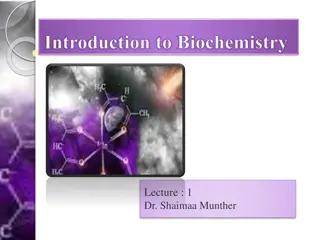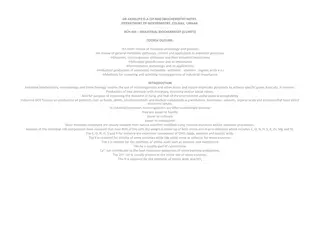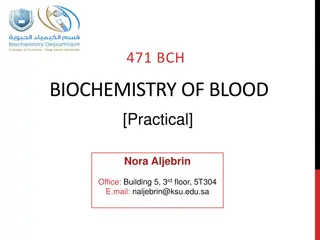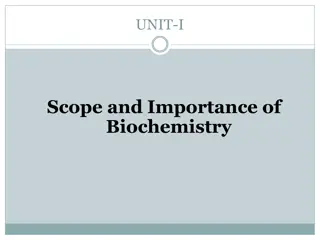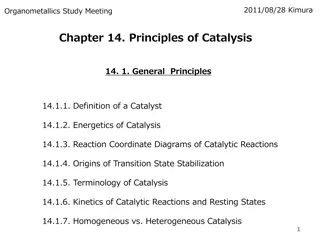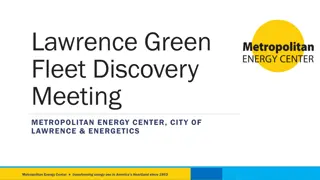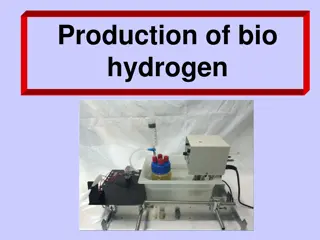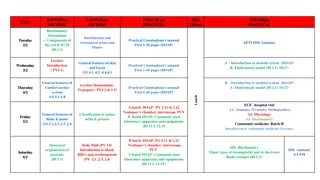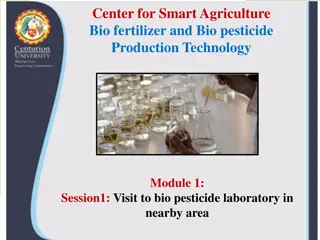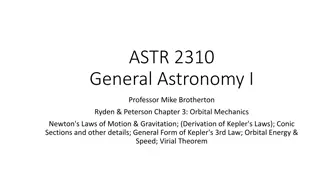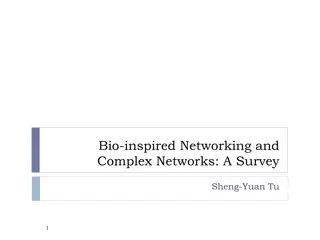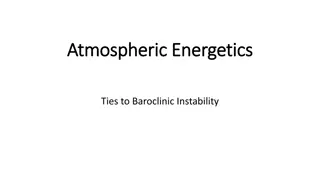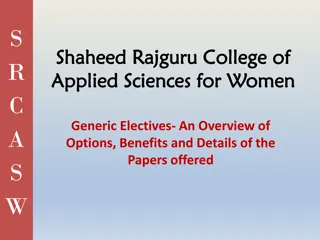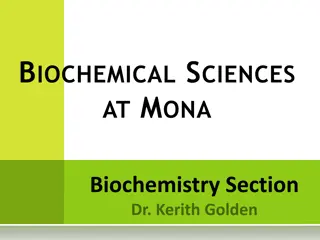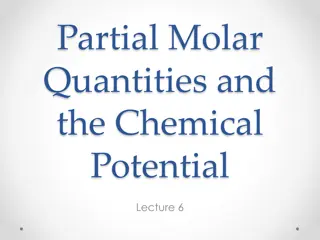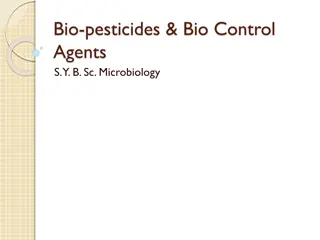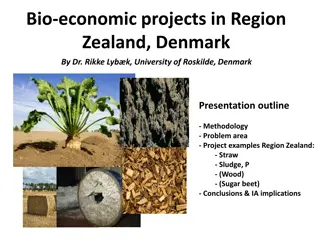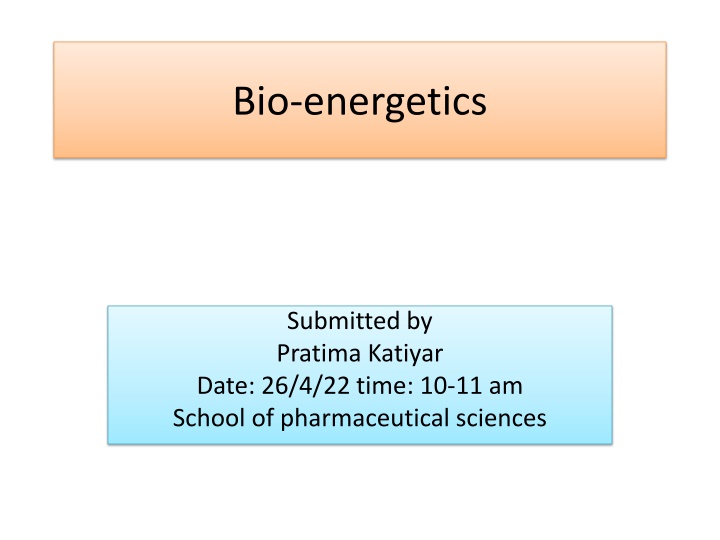
Exploring Bio-energetics in Chemical Reactions and Energy Metabolism
Dive into the realm of bio-energetics, examining the concept of free energy, endergonic and exergonic reactions, and the interplay between entropy, enthalpy, and free energy. Explore the significance of redox potential, energy-rich compounds, and the essential role of ATP and cyclic AMP in cellular processes.
Download Presentation

Please find below an Image/Link to download the presentation.
The content on the website is provided AS IS for your information and personal use only. It may not be sold, licensed, or shared on other websites without obtaining consent from the author. If you encounter any issues during the download, it is possible that the publisher has removed the file from their server.
You are allowed to download the files provided on this website for personal or commercial use, subject to the condition that they are used lawfully. All files are the property of their respective owners.
The content on the website is provided AS IS for your information and personal use only. It may not be sold, licensed, or shared on other websites without obtaining consent from the author.
E N D
Presentation Transcript
Bio-energetics Submitted by Pratima Katiyar Date: 26/4/22 time: 10-11 am School of pharmaceutical sciences
Content Introduction Concept of free energy Endergonic & exergonic reaction Relationship between free energy,enthalpy and entropy Redox potential Energy rich compounds Significance of ATP & C AMP
Introduction Bio energetics or biochemical thermodynemic deals with study of energy charges in biochemical reactions concerned with the intial and final state of energy component of reactants
Concept of free energy Symbol- G The energy actually available to utilization as work is known as free energy. G means Change in free energy Negative G Positive G G become zero when reaction is at equllibrium
Endergonic & exergonic reaction Endergonic reaction: is a chemical reaction where energy is absorbed. G = +ve Exergonic reaction: is a chemical reaction where their release of free energy. G= -ve
Relationship between free energy,enthalpy and entropy Enthalpy H : measure of change in heat content of the reactant compared to product. Entropy S : represent a change in the randomness or disorder of reactants and products. G = H T. S
Redox potential Symbol: E o Oxidation Reduction potential or redox potential is a quantitative measure of the tendency of the redox pair to loss or gain electrons.
Energy rich compounds Some biological compounds are giving energy on hydrolysis. Classification Based on releasing energy A) High energy compounds: librated at least 7 or more than 7 cal/mol upon hydrolysis. E.g. ATP, Acyl phosphate, thioesters. B) Low energy compounds: libreted than less then 7 cal/mol. E.g. ADP
Significance of ATP & C AMP ATP is energy currency of the all body reactions Cyclic AMP is second messengers. And it is derivative of ATP.



